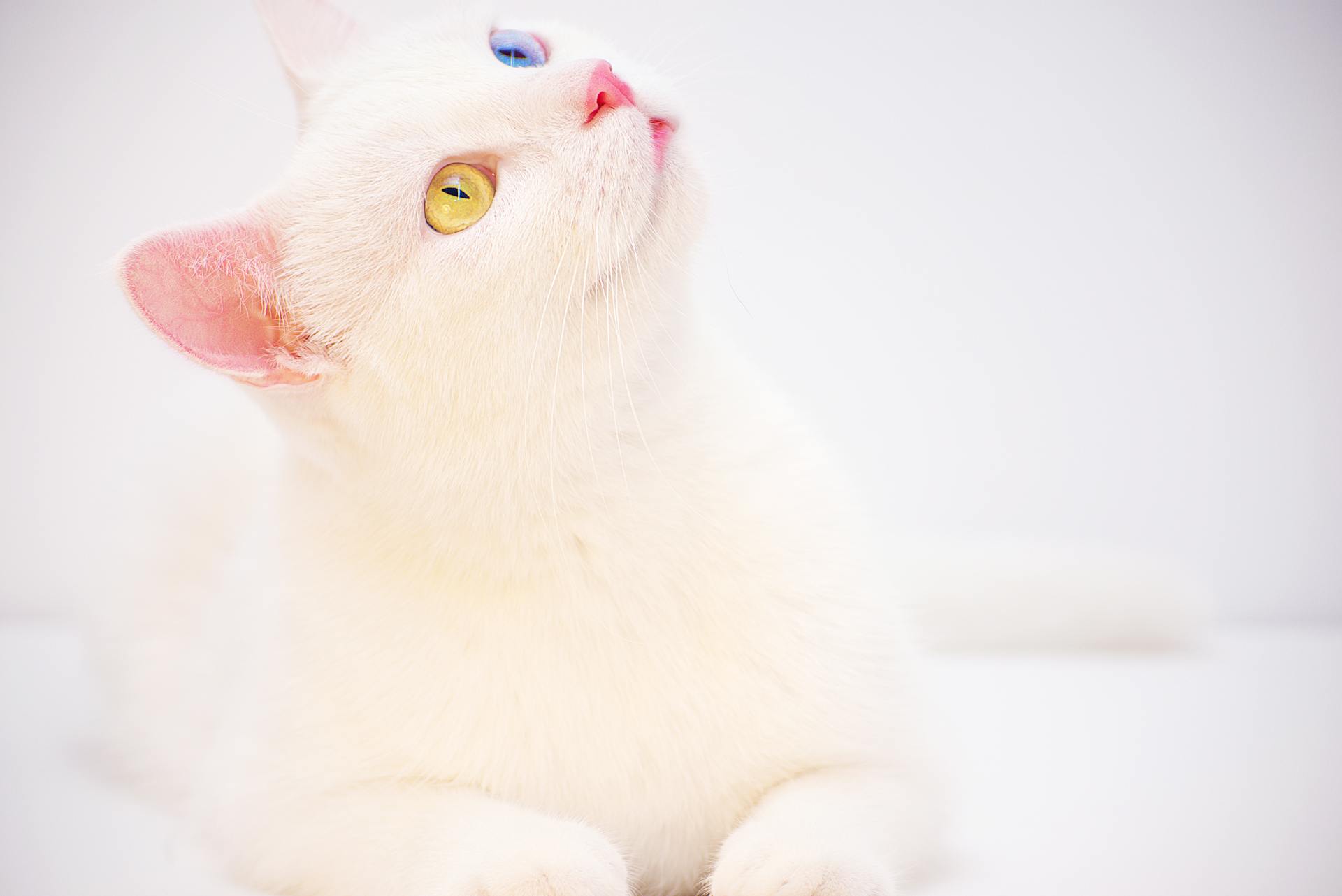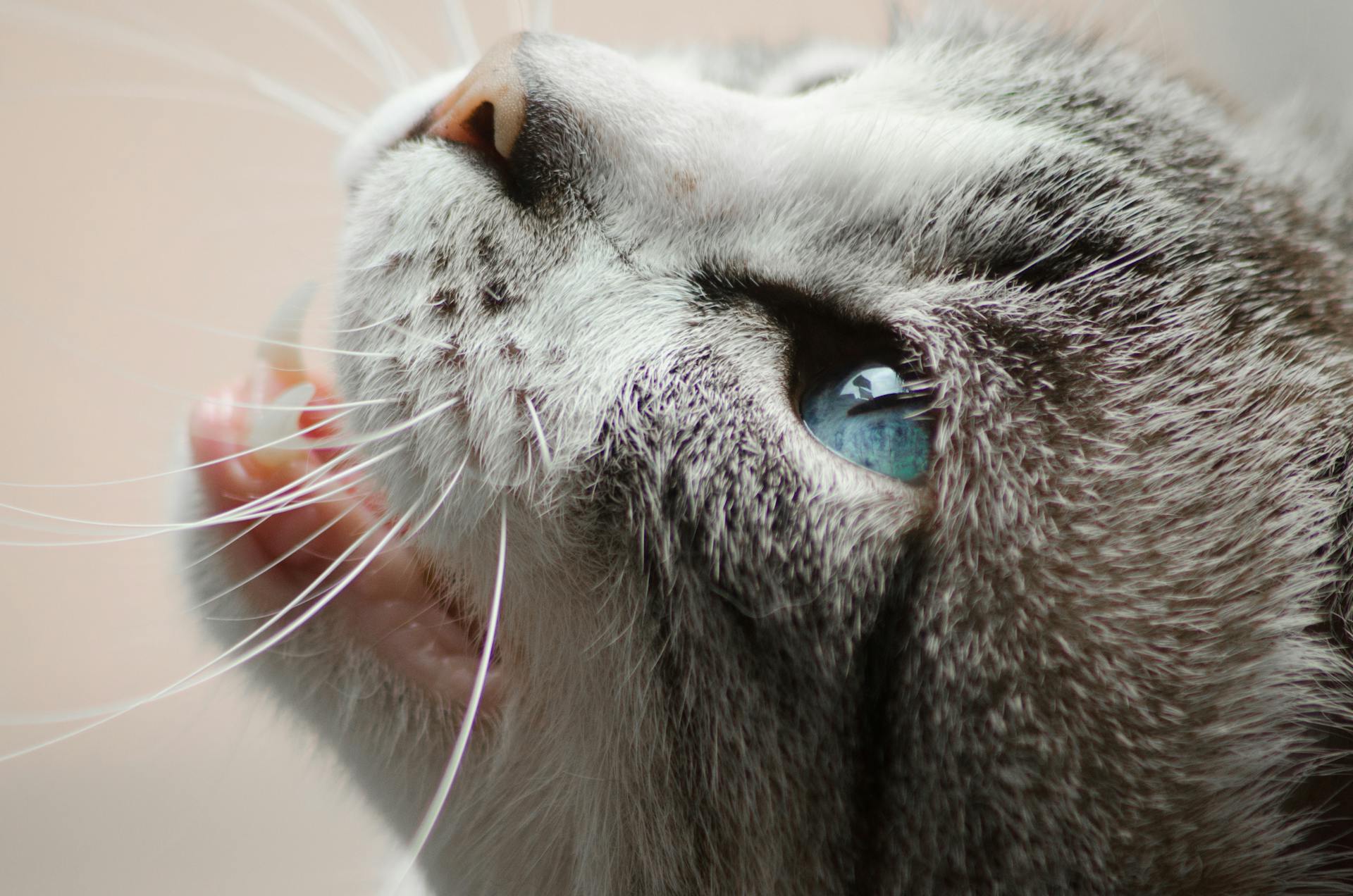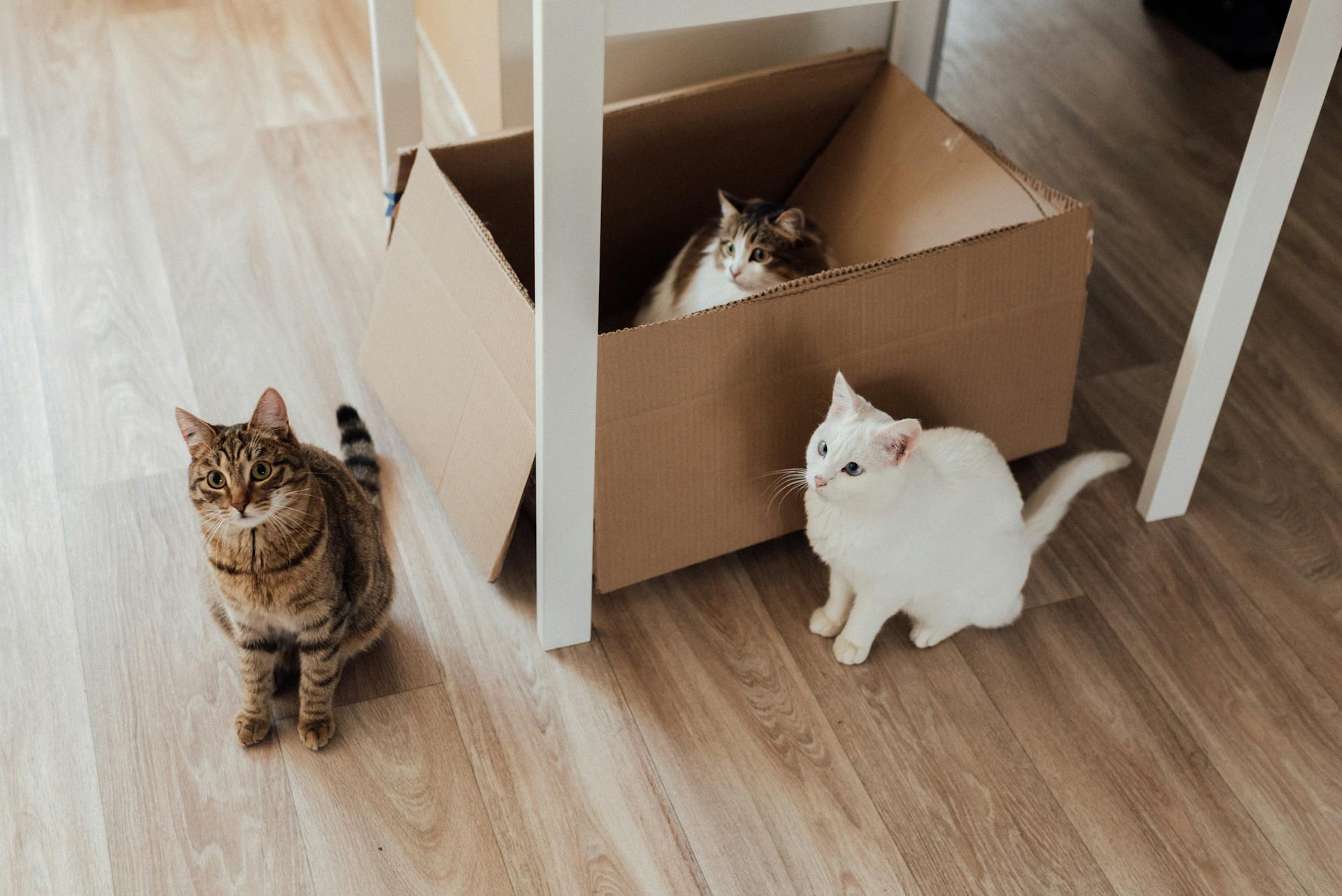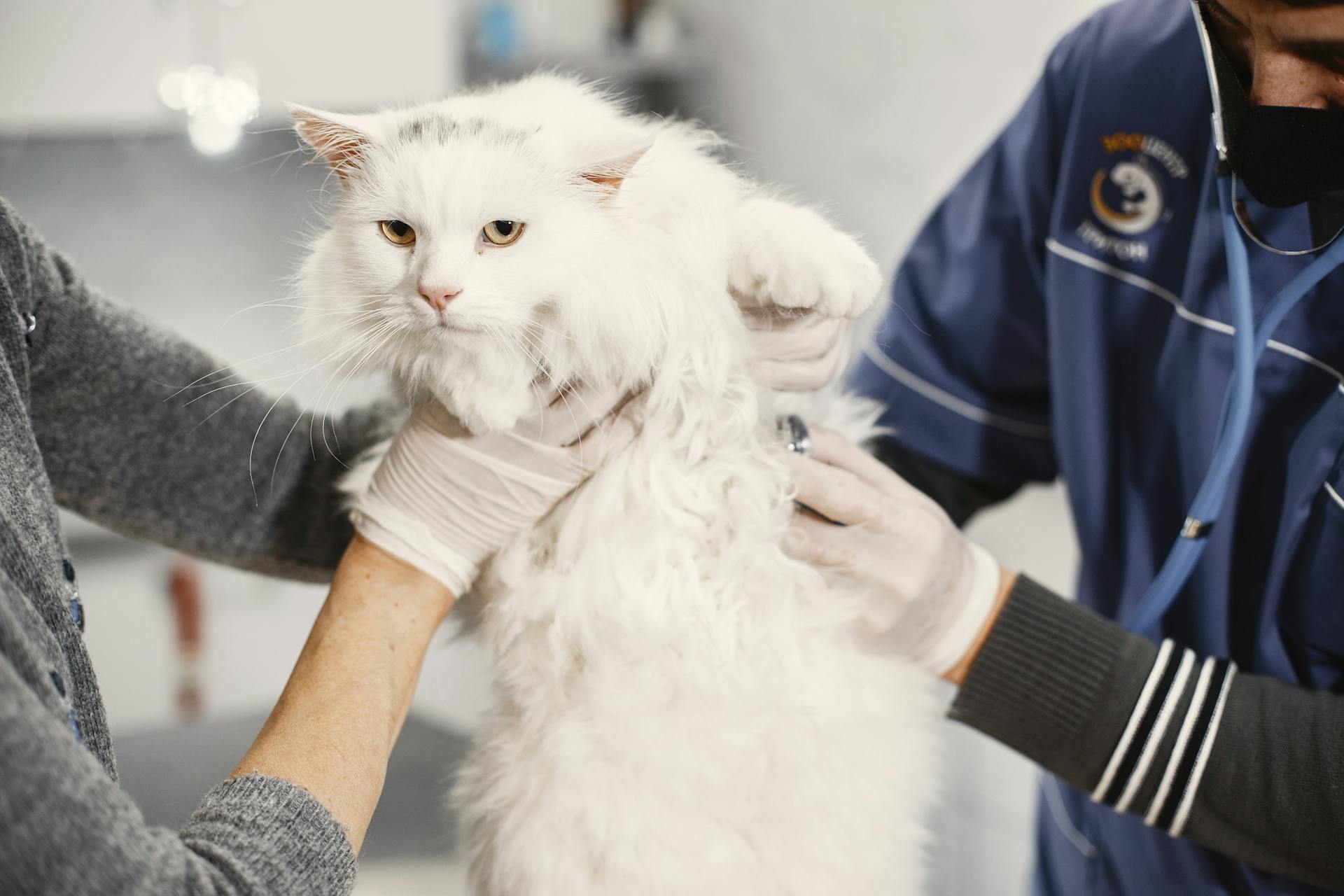
Cat shows are a thing, and they're similar to dog shows in some ways. They're a great way for cat fanciers to show off their pets and compete for titles and prizes.
The first cat show was held in London in 1871, making it a bit older than the first dog show. This event was organized by Harrison Weir, a British artist and cat breeder.
Cat shows typically involve a panel of judges who evaluate the cats based on their breed, size, coat, and overall appearance. The cats are usually divided into categories like Longhair and Shorthair, and then further divided by breed.
Cat owners can prepare their cats for shows by getting them accustomed to being handled and groomed, and by practicing their cat's walking and posing on a leash.
Cat Show Structure
Cat shows have a similar structure to dog shows, but with some key differences. The classes are divided into different categories based on age, sex, and breeding status.
Male Kittens (4-6 months) and Male Kittens (6-8 months) are two separate classes, indicating that age is an important factor in the judging process. The Male Opens class is further divided into two subcategories: whole cats and neuters.
The winners of each regular class, including Male and Female classes, enter the "Ring" to compete for higher awards. These awards include Best of Breed, Best of Opposite Sex (to Best of Breed), Best Champion, Best Open, and Best Kitten.
Here's a breakdown of the classes in a table:
The competition is fierce, but with the right preparation and care, your cat can shine in the show ring.
Entering and Judging
Entering a cat show requires some preparation and research. It's a good idea to attend a show as a spectator first to get a feel for the atmosphere. This will help you understand the culture and information surrounding cat shows.
To ensure your cat is comfortable and stress-free, it's essential to get them used to being handled by strangers in an unfamiliar environment. You can do this by gradually introducing them to new people and places. If your cat is registered with a governing organization, such as the CFA, you'll need to get a copy of the breed standards for their breed.
To enter your cat into a show, you'll need to register them with the organization and provide documentation of their health and vaccination records. You'll also need to fill out an entry form, which should be submitted well in advance of the show.
Here are some essential items to bring to the show:
- Benched cage
- Vaccination documentation
- Food and water, as well as dishes for your cat
- Litter box
- Toys to keep your cat entertained
- Necessary supplies for grooming
Entering and Judging
Entering a cat show can be a fun and rewarding experience for both you and your feline friend. Before you decide to enter, it's a good idea to attend a show as a spectator to get a feel for the atmosphere and learn more about the culture.
Judges at cat shows compare cats to their breed standard, which is established by organizations like the CFA. They look for features such as fur coat pattern and texture, head proportions, profile, teeth, eye size and color, neck, paws, and tail.
To prepare your cat for a show, make sure to get familiar with the breed standards for your cat's breed. You can find these standards on the CFA's website. It's also essential to learn how to groom your cat to make it look its best.

If you're planning to enter your cat into a show, you'll need to register it with a governing organization like the CFA. This typically requires that your cat be healthy and vaccinated, so be sure to get documentation from your vet.
Here's a list of things to bring to a cat show:
- Benched cage
- Food and water
- Dishes
- Litter box
- Toys
- Grooming supplies
- Vaccination documentation
It's also a good idea to bring your cat on board with you if you need to fly to the show from out of town, rather than storing it in cargo space.
Once you've arrived at the show, make sure to show up early to find your benched cage. Be prepared to spend time grooming your cat and keeping it entertained while it's waiting to be judged.
Judges at cat shows evaluate cats in different categories, including open, champions, and premiers. They award ribbons and points to the cats that meet the breed standards, and the cat with the most points at the end of the show is declared the winner.
Here's a breakdown of the awards that can be given at a cat show:
- Best-of-color class (black ribbon)
- Second best-of-color class (white ribbon)
- Best-of-breed or division (brown ribbon)
- Second best-of-breed or division (orange ribbon)
- Best champion/premier of breed or division (purple ribbon)
- Rosette ribbons for the top ten favorite cats
Entering a Cat in a Show
Entering a cat in a show requires some preparation and knowledge of the process. To start, it's a good idea to attend a cat show as a spectator to get a feel for the atmosphere and what's involved.
You'll want to get familiar with the culture and information out there on cats by reading cat magazines, which often list the schedule of shows. This will help you understand the rules and requirements for entering a show.
Before entering a show, make sure your cat is up to the task. Many cats don't appreciate being handled by strangers in an unfamiliar environment, which can cause undue stress. If you're planning to enter a show, it's essential to consider your cat's temperament and personality.
To enter a show, you'll need to register your cat with a governing organization, such as the CFA, and obtain a copy of the breed standards for your cat's breed. This will give you a good idea of what judges will look for in your cat.
Here are the typical classes you'll find in a cat show:
Once you've registered your cat and chosen a class, you'll need to fill out an entry form and submit it well in advance of the show. Be sure to include all necessary documentation, such as your cat's vaccination records, to avoid any last-minute issues.
Competition and Awards
Cat shows are a fascinating world, and if you're curious about how they work, you're in the right place. Cat shows are a bit different from dog shows, but they share some similarities.
In a cat show, cats compete in individual judging rings, and each ring has its own judge. The judges evaluate the cats and award ribbons to the winners, with the top cat receiving a winner's ribbon. To become a champion, a cat needs to win six winner's ribbons in the open category.
The classes in a cat show are divided into several categories, including championship, premiership, provisional, kitten, miscellaneous, veteran, and household pet. Each class has its own set of rules and requirements.
Here's a breakdown of the classes:
- Championship: Cats that are not spayed or neutered and are at least eight months old compete for championship titles.
- Premiership: Spayed or neutered cats that would otherwise qualify for competing in the championship class compete for premier titles.
- Provisional: This class includes cat breeds that the CFA has not yet fully recognized.
- Kitten: Cats in this class are between four and eight months old.
- Miscellaneous: This includes breeds that have not yet achieved provisional status.
- Veteran: Cats in this class are at least seven years old.
- Household pet: Any cat that has not been declawed but has been spayed or neutered after eight months can enter this class.
Judges evaluate the cats in each class and award ribbons to the winners. The top cat in each class receives a winner's ribbon, and the cat with the most winner's ribbons becomes a champion.
The awards in a cat show can be a bit confusing, but here's a rundown of the main awards:
- Best-of-color class (black ribbon) and second best-of-color class (white ribbon): These awards are given to the top cats in each color group.
- Best-of-breed or division (brown ribbon) and second best-of-breed or division (orange ribbon): These awards are given to the top cats in each breed or division.
- Best champion/premier of breed or division (purple ribbon): This award is given to the top champion or premier in each breed or division.
- Best-in-show: This is the highest award in a cat show, and it's given to the top cat overall.
So, if you're thinking of taking your cat to a show, make sure you know which class they qualify for and what the rules are. With a little practice and patience, you and your cat can become pros at cat shows!
History and Media
Cat shows have a rich history that dates back to the 19th century, with the first cat show held in London in 1871.
The first cat show was organized by Harrison Weir, a British artist and cat breeder, who wanted to promote the improvement of domestic cat breeds.
Cat shows gained popularity in the early 20th century, with the formation of the Cat Fanciers' Association (CFA) in 1919, which established the first breed standards for domestic cats.
The CFA is still one of the largest and most well-established cat registries in the world, with over 600,000 registered cats.
Cat shows are often held in conjunction with dog shows, and many cat fanciers attend both events to admire the variety of breeds on display.
History of Cat Shows
Cat shows have a rich history that spans over a century. The first cat show, The First Crystal Palace Cat Show, took place on July 13th, 1871 in London.
The show was organized by Harrison Weir, an artist and avid cat lover. Over 20,000 guests attended the show, making it a huge success.
The show featured a variety of exotic cats, including Manx, Angora, and the Scottish Wild Cat, which belonged to the Duke of Sutherland.
Cat Competitions on TV
Cat competitions have been featured on television, with shows like Catwalk: Tales From The Cat Show Circuit giving viewers a behind-the-scenes look at the world of cat shows.
This show follows two competing cat moms and their prize-winning fur babies as they face off for Best In Show. Catwalk documents the stressful and exciting moments of life as a kitty beauty queen.
Commentary Team
If you're wondering how cat shows are similar to dog shows, one key aspect is the commentary team. A color commentator and an announcer would be part of the team, reading out personal information about each cat during judging.
The commentary team would appeal to the grass roots exhibitor by highlighting their stories and experiences. This is a deliberate attempt to focus on the exhibitors who are passionate about their cats, rather than just the top campaigners.
During Group Judging, the commentary team would provide informative comments about each breed, announced over a PA system. This would help the audience learn more about the different breeds and their characteristics.
The personal information about each cat would be included in the entry form, with a request for 1-2 paragraphs of highlights, cute stories, and challenges. This would provide a unique insight into each cat's personality and background.
Sources
- https://animals.howstuffworks.com/pets/cat-show.htm
- https://frontpagemeews.com/category/pet-news/pop-culture/cat-shows/
- https://www.petmate.com/blogs/petmate-academy/introduction-to-cat-shows
- https://showcatsonline.com/a-different-kind-of-cat-show/
- https://www.npr.org/sections/thetwo-way/2017/02/01/512901179/westminster-dog-show-welcomes-new-species-cats
Featured Images: pexels.com


